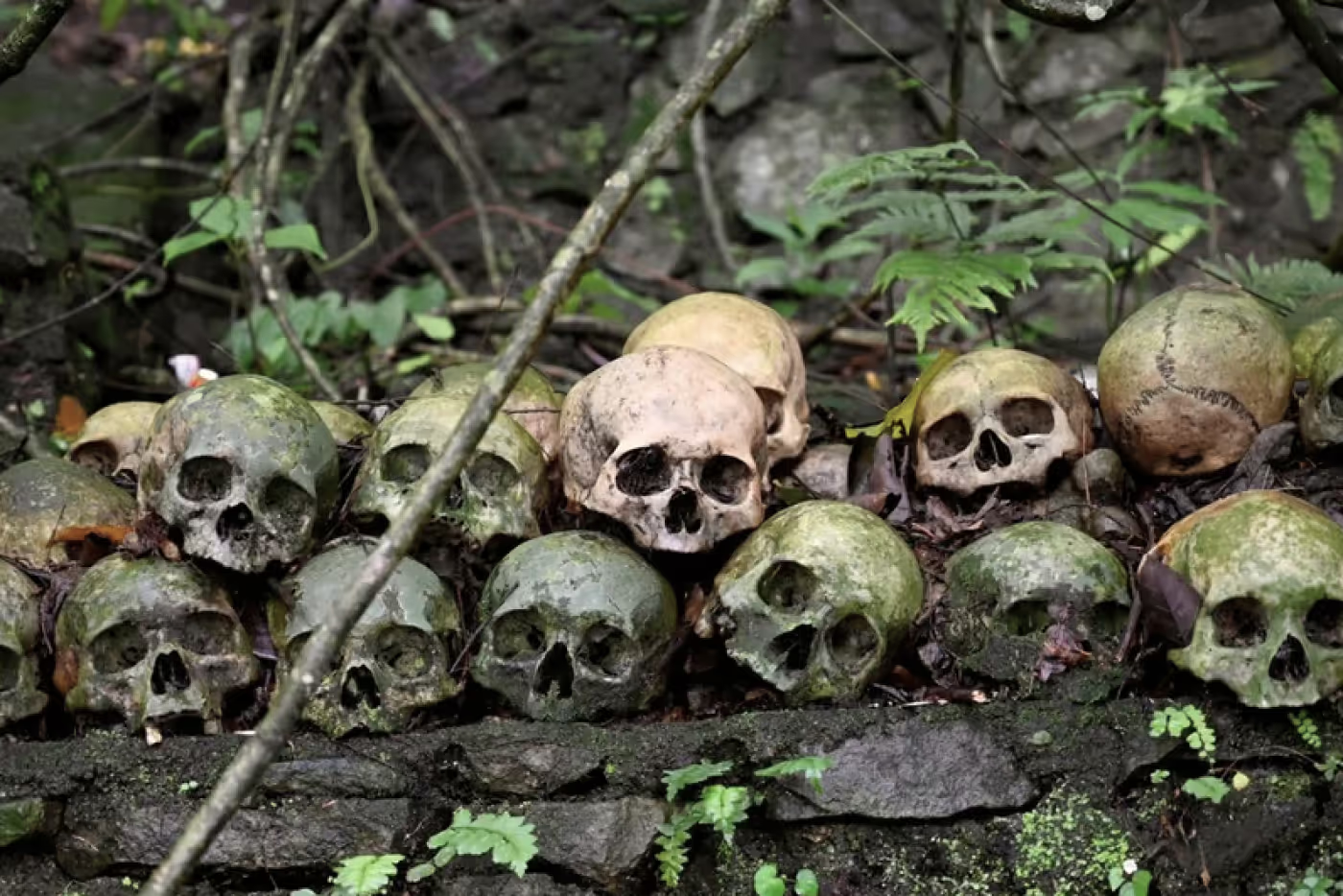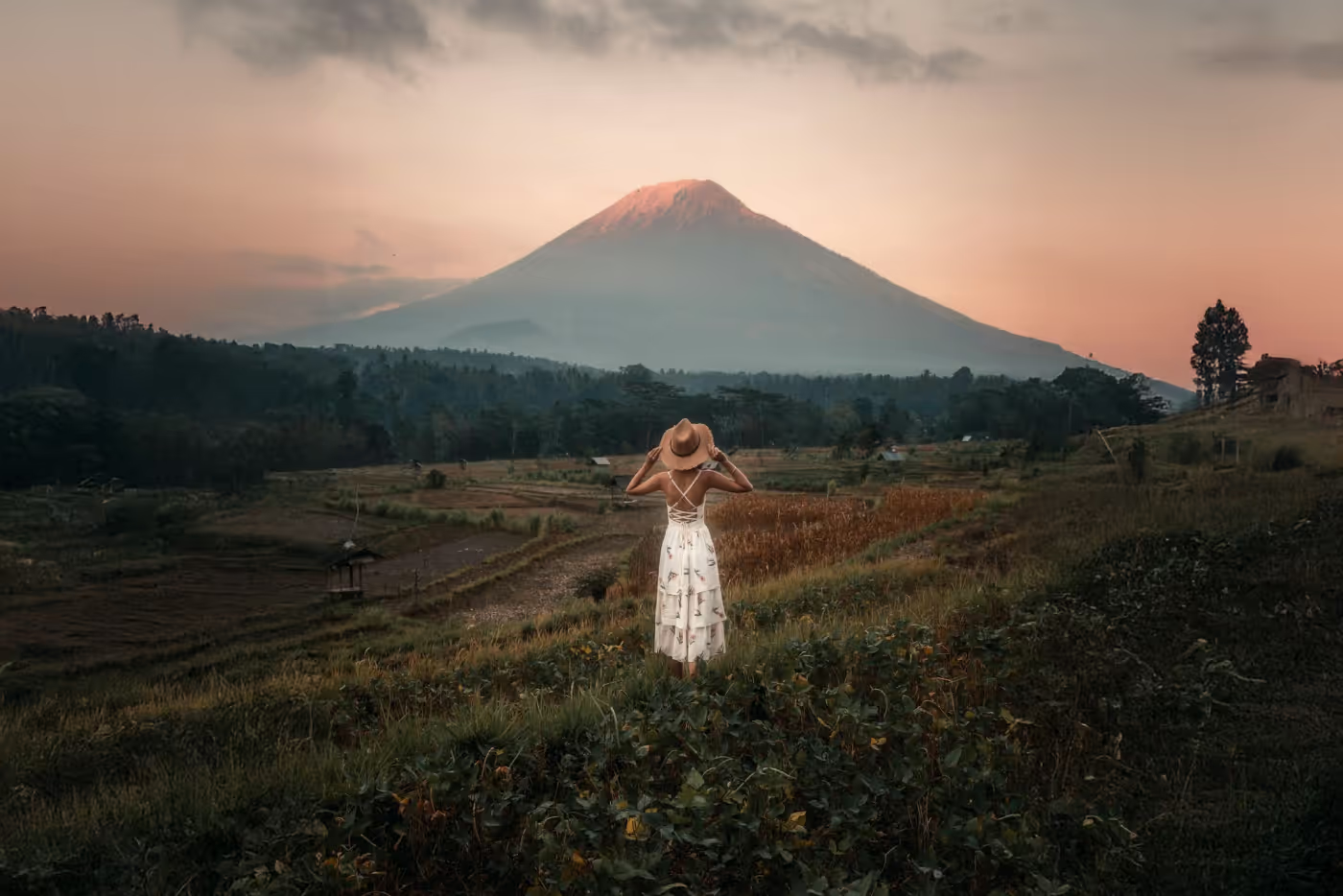In the shadow of Bali's active volcanoes, a network of footpaths connects remote mountain villages, each with its own distinct traditions and ways of life. These five trails, ranging from gentle day walks to challenging multi-village treks, offer a chance to experience authentic highland culture while witnessing how communities have adapted to life alongside some of the world's most active volcanoes.

The Mount Batur Village Circuit
This remarkable circuit encircles the caldera of Mount Batur, connecting four remote villages perched at different elevations around the volcano. Each settlement has developed unique adaptations to life on an active volcano, from specialized agriculture to distinctive building techniques designed to withstand ash falls and tremors.
The trail passes through lava fields of different ages, each supporting distinct stages of natural recovery and specialized farming. In the villages themselves, you'll witness morning preparations of offerings to the volcano deity, traditional bamboo construction techniques, and the harvesting of volcanic minerals used in traditional medicine and cooking.

The Three Temple Trek of Mount Agung
This sacred path connects three ancient temples built as spiritual buffers against Mount Agung's volatile power. The trail begins at Besakih Temple and follows traditional pilgrimage routes through highlands inhabited by communities who serve as traditional guardians of these sacred sites.
What makes this trek special is its deep connection to Mount Agung's spiritual significance. Each village along the route maintains unique ceremonies and ritual objects designed to maintain harmony with the volcano. The traditional houses feature distinct architectural elements specifically developed to withstand both physical and spiritual aspects of volcanic activity.

Munduk Highland Traverse
This gentle multi-day route connects a string of traditional villages in Bali's northwest highlands, each specializing in different mountain crops. The path follows ancient trade routes that have connected these communities for centuries, passing through aromatic coffee plantations, clove forests, and terraced vegetable gardens.
What distinguishes this walk is the remarkable diversity of traditional agriculture practiced in close proximity. You'll see how different microclimates created by the volcanic topography allow for specialized crops in each village, from coffee and chocolate to rare culinary herbs found nowhere else on the island.

The Crater Lake Communities
This challenging trek links three villages surrounding the sacred crater lakes of Tamblingan, Buyan and Bratan. These communities have maintained distinctive traditions revolving around the lakes, which they consider to be manifestations of ancient deities.
The trail passes through pristine mountain forest and offers spectacular views across all three lakes. In each village, you'll encounter unique watercraft, fishing techniques, and rituals designed to maintain spiritual balance with the lake deities. Traditional wooden houses feature distinctive carvings representing water spirits and volcanic gods in harmony.

The Trunyanese Way
This remote trail connects the isolated villages along the eastern rim of Mount Batur's caldera, home to communities that maintain some of Bali's oldest cultural traditions. The path follows ancient routes used for ceremonial exchanges between these villages, which remain largely unchanged for centuries.
What makes this trail extraordinary is the glimpse it offers into pre-Hindu Balinese traditions still practiced in these remote communities. You'll witness unique funeral customs, distinctive musical traditions, and ancient agricultural ceremonies found nowhere else on the island. The villages themselves feature traditional architecture specifically adapted to the volcanic environment.








